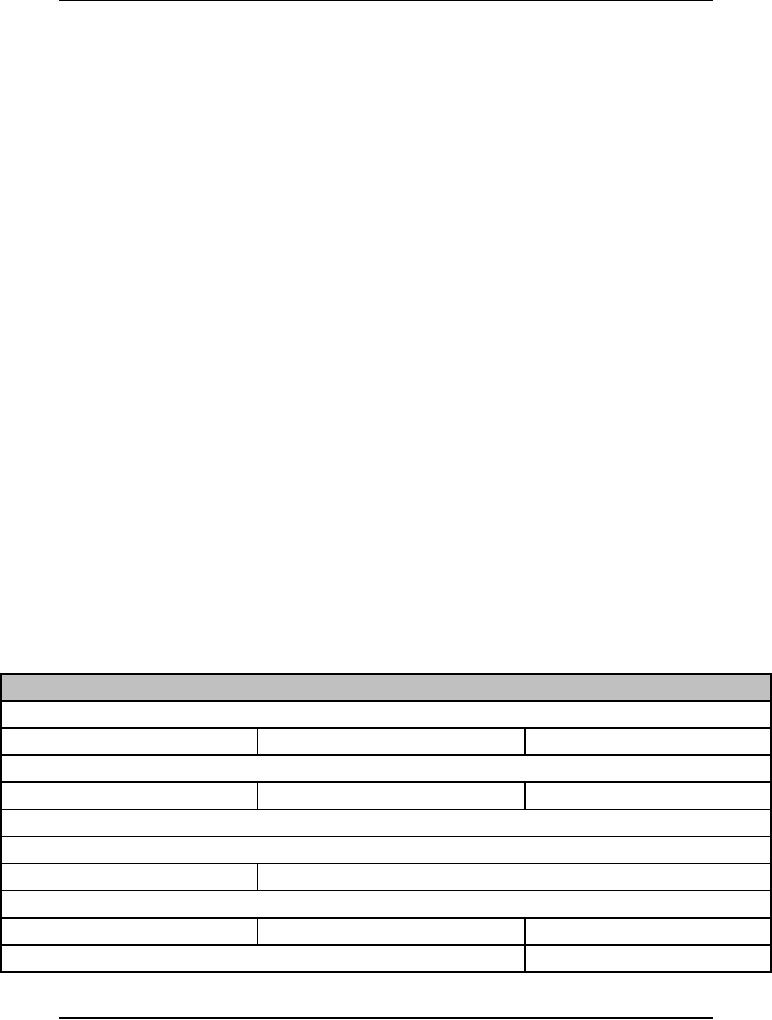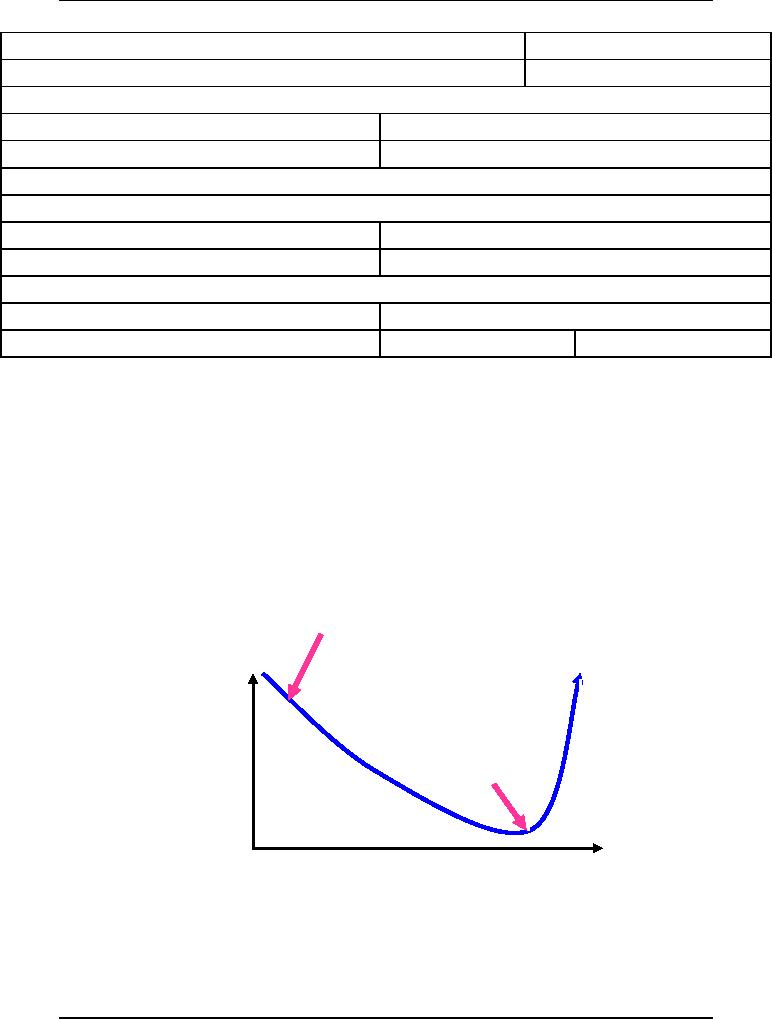 |
Software Quality Assurance Activities |
| << Quality Assurance Management, Quality Factors |
| Software Process, PM Process Groups, Links, PM Phase interactions >> |

Software
Project Management
(CS615)
LECTURE
# 19
2.
Software Development
Fundamentals
Technical
Fundamentals
2.15
Quality
Assurance Management
⇒ Software
Quality Assurance
Activities
SQA is
the process of evaluating
the quality of a product and
enforcing adherence
to
software product standards and
procedures. It is an umbrella activity
that
ensures
conformance to standards and procedures
throughout the SDLC of
a
software
product. There are a large
number of tasks involved in
SQA activities.
These
include:
i.
Formulating
a quality management
plan
ii.
Applying
software engineering
techniques
iii.
Conducting
formal technical
reviews
iv.
Applying
a multi-tiered testing
strategy
v.
Enforcing
process adherence
vi.
Controlling
change
vii.
Measuring
impact of change
viii.
Performing
SQA audits
ix.
Keeping
records and reporting
i.
Formulating
a Quality Management
Plan
One of
the tasks of SQA is the
formulation of a quality management plan.
The
quality
management plan identifies the
quality aspects of the
software product to
be
developed. It helps in planning
checkpoints for work
products and the
development
process. It also tracks changes
made to the development
process
based on
the results of the checks.
The quality management plan is
tracked as a
live
plan throughout the
SDLC.
ii.
Applying
Software Engineering
Application
of software engineering techniques
helps the software designer
to
achieve
high quality specification.
The designer gathers information
using
techniques
such as interviews and FAST.
Using the information gathered,
the
designer
prepares project estimation
with the help of techniques
such as WBS,
SLOC
estimation, or FP estimation.
iii.
Conducting
Formal Technical
Reviews
Formal
technical review (FTR) in
conducted to assess the
quality and design of
the
prototype. It is a meeting with
the technical staff to
discuss the quality
122

Software
Project Management
(CS615)
requirements
of a software product and its design
quality. FTRs help in
detecting
errors at
an early phase of development.
This prevents errors from
percolating
down to
the latter phases and
resulting in rework.
iv.
Applying
a Multi-tiered Testing
Strategy
Software
testing is a critical task of SQA
activity, which aims at error
detection.
Unit
testing is the first level
of testing. The subsequence
levels of testing are
integration
testing and system level
testing. There are various
testing strategies
followed
by organization. At times, developers
perform unit testing
and
integration
testing with independence testing
support. There are also
occasions
where
testers perform functional
testing and system level
testing with
developer
support.
Sometimes beta testing with
selected clients is also conducted to
test the
product
before it is finally
released.
v.
Enforcing
Process Adherence
This task
of SQA emphasizes the need
for process adherence during
product
development.
In addition, the development
process should also adhere
to
procedures
defined for product
development. Therefore, this is a
combination of
two
tasks, product evaluation and process
monitoring.
vi.
Product
Evaluation
Product
evaluation ensures that the
standards laid down for a
project are followed.
During
product evaluation, the
compliance of the software
product to the
existing
standards
is verified. Initially, SQA
activities are conducted to
monitor the
standards
and procedures of the project. Product
evaluation ensures that
the
software
product reflects the
requirements identified in the
project management
plan.
vii.
Process
Monitoring
Process
monitoring ensures that appropriate
steps to follow the
product
development
procedures are carried out.
SQA monitors processes by
comparing
the
actual steps carried out
with the steps in the
documented procedures.
Product
evaluation and process monitoring ensure
that the development
and
control
processes described in the
project management plan are
correctly carried
out.
These tasks ensure that the
project-re1ated procedures and standards
are
followed.
They also ensure that products and
processes conform to standards
and
procedures.
Audits ensure that product
evaluation and process monitoring
are
performed.
viii.
Controlling
Change
This task
combines human procedures and automated
tools to provide a
mechanism
for change control. The change
control mechanism ensures
software
quality
by formalizing requests for change,
evaluating the nature of change,
and
controlling
the impact of change. Change control
mechanism is implemented
during
the development and maintenance
stages.
123

Software
Project Management
(CS615)
ix.
Measuring
Impact of Change
Change is
inevitable in the SDLC.
However, the change needs to be
measured and
monitored.
Changes in the product or
process are measured using
software quality
metrics.
Software qua1ity metrics
helps in estimating the cost and
resource
requirements
of a project. To control software
quality; it is essential to
measure
quality
and then compare it with established standards.
Software qua1ity
metrics
are
used to evaluate the
effectiveness of techniques and tools,
the productivity of
development
activities and the qua1ity of
products. Metrics enables mangers
and
developers
to monitor the activities and
proposed changes throughout
the SDLC
and
initiate corrective
actions.
x.
Performing
SQA Audits
SQA
audits scrutinize the
software development process by
comparing it to
established
processes. This ensures that
proper control is maintained
over the
documents
required during SDLC. Audits
also ensure that the status of an
activity
performed
by the developer is reflected in
the status report of the
developer.
xi.
Keeping
Records and Reporting
Keeping
records and reporting ensure the
collection and circulation of
information
relevant
to SQA. The results of
reviews, audits, change control,
testing, and other
SQA
activities are reported and
compiled for future
reference.
⇒ Software
Review
Software
review is an effective way of
filtering errors in a software
product.
Typically,
an error found after the
product release costs 50
times as much to
correct
as one detected during the design
phase.
This
means the cost of fixing a
defect rises dramatically if it is
found late in the
development
life cycle of the product.
Therefore, you need to
filter errors as
early
as
possible.
Software
review is used as a filter at
various points of software
development.
Reviews
conducted at each of these
phases, analysis, design, coding, and
testing
reveal
areas of improvement in the
product.
Reviews
also indicate those areas that do
not need any improvement.
You can use
software
reviews to achieve consistency and
uniformity across products.
Reviews
also make
the task of product creation
more manageable. Some of the
most
common
software review techniques,
practiced across software
organizations
include:
a)
Inspection
b)
Walkthrough
c) Formal
technical reviews
a)
Inspections
124

Software
Project Management
(CS615)
Inspections
improve the reliability,
availability, and maintainability of
a
software
product. Anything readable
that is produced during
software
development
can be inspected. The readable material
can be requirements
specifications,
design documents and models,
test plans,
system
documentation,
and user aids. Group inspections enable
team members to
exchange
knowledge and ideas during an
inspection session.
Inspections
can be combined with structured,
systematic testing to provide
a
powerful
tool for creating
defect-free programs. The
inspection activity
follows a
specified process and the
participants play well-defined
roles. An
inspection
team consists of three to eight members
who play the roles
of
moderator,
author, reader, recorder, and
inspector.
Moderator
leads the inspection, schedules
meetings, controls meetings,
reports
inspection
results, and follows up on rework
issues. Author creates
or
maintains
the work product being
inspected. Reader describes the sections
of
the
work product to the team as
they proceed through
inspection. Recorder
classifies
and records defects and issues raised
during the inspection.
The
moderator
might perform this role in a
small inspection team.
Inspector finds
errors in
the product. All participants
play the role of inspectors.
However,
good
inspectors are those who
have created the
specification for the
work
product
being inspected. For example,
the designer can act as an
inspector
during
code inspection while a
quality assurance representative can act
as
standard
enforcer. It also helps to have a
client representative participate
in
requirements
specification inspections.
b)
Walkthroughs
The
term walkthrough refers to a
group activity in which the
developer of the
product
guides the progress of the
review. Walkthroughs are
less rigorous than
either
formal inspections or peer
reviews in which the
developer plays a
more
passive
role. Normally walkthroughs
turn into a presentation by
the author.
The
focus of finding errors is
diluted. Such misadventures make
walkthroughs
usually
less successful at detecting bugs
than the more formal
review
methods.
Two
useful walkthrough approaches
adopted worldwide are group
reviews
with
individual preparation and individual
peer desk-checks. Group
reviews
are
not very rigorous like
inspections. The group
reviews involve many of
the
same
activities and roles, such as
individual preparation and the
use of a
moderator
and a recorder. Usually the
overview meeting and the
follow-up
steps
are skipped and checklists are
used sparingly. At the end,
the readers
paraphrase
their interpretation of what a
program is doing.
125

Software
Project Management
(CS615)
Individual
peer desk-checks are quite
cost-effective. Only one person
besides
the
author examines the
material. This approach can be more
effective if there
are
individuals who are
extremely good at finding defects on
their own.
Tip:
If
someone consistently finds
most of the group-identified defects
during the
individual
preparation step, such a person is
fit to perform individual
peer
desk-checks.
c)
Formal Technical
Reviews
One of
the most common, yet
important, software quality
assurance activity
performed
is FTR. This activity is
performed to check errors in
logic,
function,
or implementation for any
representation of the
software.
Using
FTR, you can verify whether
or not the software product
adheres to the
defined
standards. FTR is also conducted to check
for consistency in
the
software
product and audit the
manageability of the software
product. It
includes
activities such as walkthrough and
inspection.
FTR
focuses on specific parts of the software
product, such as the
requirements
components, detailed design module, and
the source code
listing
for a
module.
FTR also
concentrates on the entire product.
The participants in FTR are
the
developer,
the project leader, and all
the reviewers.
At the
end of the review meeting,
the issues recorded are
formalized into
review
issues list. The minutes of
the meeting are summarized
into a review
summary
report as displayed in table
4.
Technical
Review Report
Review
Identification
Project
Name
Current
Phase
Review
Number
Product
Identification
Item
Reviewed
Version
No.
Developer
Brief
Description
Documents
Referred (along with
versions, if any)
Start
Name
End
Time
Review
Material Attached: Yes / No
Participants
Role
Preparation
Time
126

Software
Project Management
(CS615)
Total
Review Time (No. of
Participants * Actual duration of
meeting)
Total
Review Person Hours
Product
Appraisal
Accepted
as is ( )
With
Minor Modification ( )
Not
Accepted Major Revision (
)
Minor
Revision ( )
Review
Not Completed (Explanation as
follows)
Supplementary
Material Attached
Issue
Lists:
Others
Revise
and Reschedule (if
required)
Target
Date for Next Review
Verification
of Defect Closure
Responsibility
of:
Planned
Date of Verification
Recommended
for Release
Signature:
Date:
Table
4: Technical
Review Report
Tip:
To
prepare realistic schedule,
you can collect data from
past projects. Speak to
related
project
managers regarding time
estimation for reviews, the
review capacity of
the
reviewer,
and estimates the review
effort accordingly.
Most
Organizations Are somewhere
around this
point
Fastest
schedule
(BEST
schedule)
Development
Development
Time
Time
95%
100%
Percentage
of
Defects
Removed
127
Table of Contents:
- Introduction & Fundamentals
- Goals of Project management
- Project Dimensions, Software Development Lifecycle
- Cost Management, Project vs. Program Management, Project Success
- Project Management’s nine Knowledge Areas
- Team leader, Project Organization, Organizational structure
- Project Execution Fundamentals Tracking
- Organizational Issues and Project Management
- Managing Processes: Project Plan, Managing Quality, Project Execution, Project Initiation
- Project Execution: Product Implementation, Project Closedown
- Problems in Software Projects, Process- related Problems
- Product-related Problems, Technology-related problems
- Requirements Management, Requirements analysis
- Requirements Elicitation for Software
- The Software Requirements Specification
- Attributes of Software Design, Key Features of Design
- Software Configuration Management Vs Software Maintenance
- Quality Assurance Management, Quality Factors
- Software Quality Assurance Activities
- Software Process, PM Process Groups, Links, PM Phase interactions
- Initiating Process: Inputs, Outputs, Tools and Techniques
- Planning Process Tasks, Executing Process Tasks, Controlling Process Tasks
- Project Planning Objectives, Primary Planning Steps
- Tools and Techniques for SDP, Outputs from SDP, SDP Execution
- PLANNING: Elements of SDP
- Life cycle Models: Spiral Model, Statement of Requirement, Data Item Descriptions
- Organizational Systems
- ORGANIZATIONAL PLANNING, Organizational Management Tools
- Estimation - Concepts
- Decomposition Techniques, Estimation – Tools
- Estimation – Tools
- Work Breakdown Structure
- WBS- A Mandatory Management Tool
- Characteristics of a High-Quality WBS
- Work Breakdown Structure (WBS)
- WBS- Major Steps, WBS Implementation, high level WBS tasks
- Schedule: Scheduling Fundamentals
- Scheduling Tools: GANTT CHARTS, PERT, CPM
- Risk and Change Management: Risk Management Concepts
- Risk & Change Management Concepts
- Risk Management Process
- Quality Concept, Producing quality software, Quality Control
- Managing Tasks in Microsoft Project 2000
- Commissioning & Migration